In October 2021 we had the pleasure of traveling to Guanajuato, Mexico for renowned Cervantino Festival that happens there every fall. Our good friend Pablo from Leon had recommended this epic experience filled with music, theater, art and dance. We decided to go for a week, during the thick of the pandemic, knowing that it may be smaller than normal years, but that it would be worth visiting and immersing ourselves in the city’s rich cultural tapestry.

Guanajuato: A City of Lights and History
Our Arrival
Flying from Merida, Yucatan, we landed in León and drove a rental car to the beautiful city of Guanajuato, a city nestled among mountainous terrain. The city appeared like a luminous jewel unfolding against the dark mountains, as we entered through underground tunnels (from previous mines) turned highways that night. Our airbnb perched atop a cobblestone road winding and zig zagging through an old, traditional neighborhood. We found parking a couple of blocks down from our airbnb which was situated along a steep, narrow alleyway with many steps, inaccessible to cars.
We dragged our luggage to the apartment, took in the beautiful views from the rooftop terrace and stepped out to enjoy the beautiful city by foot, our favorite way of exploring new places.

Our First Encounter
In fact we had been to Guanajato before, on a long road trip where we came from Portland, OR to Merida Yucatan with our car in tow a couple years before. That initial trip was very short, just a couple of days, and we were lucky to get to stay with some expat friends, Tim and Donna Leffel that we had met through the online group Location Indie who are amazing veteran travel writers and travel experts.
Through them we were introduced to their wonderful walking Guanajuato Food Tour, which we had taken and learned about the wonderful culinary street food hot spots in the city, with a vegetarian flair, along with the great history of Guanajuato in terms of the Mexican Revolution.
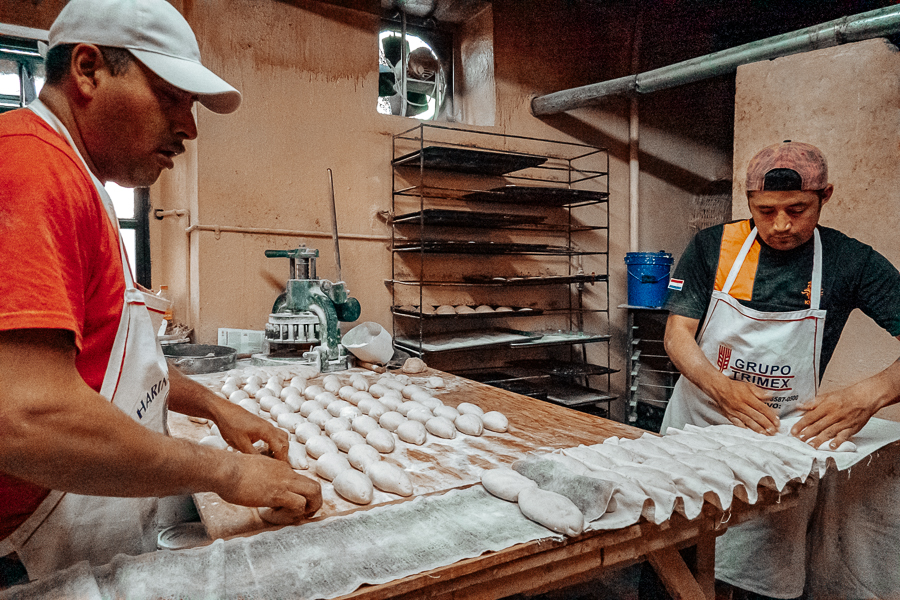
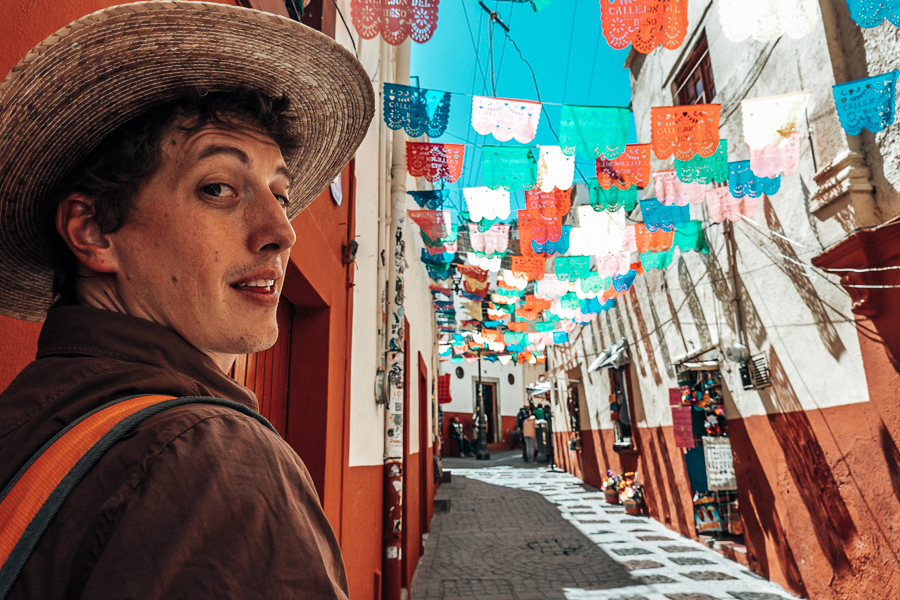

Guanajuato’s Role in Mexico’s Fight for Independence
Guanajuato was not only a pivotal city in the Mexican War of Independence it is where people say the War actually began. It is where the priest Miguel Hidalgo, rallied his Mexican patriot warriors and the site of the first significant battle between insurgents and Spanish royal troops in 1810. It was at the Alhóndiga de Granaditas, a fortress, that the battle took place, when insurgent forces attacked the Spanish troops who were hiding inside. The miner named El Pípila was the hero who lit the wooden doors on fire, making it possible for the patriots to get inside and claim their victory.
Although Miguel Hidalgo was a creole (a Mexican born Spanish person), he was dissatisfied with the rule of the Spanish crown due to their exploitation and mistreatment of the Mexicans and mainly the poor including the indigenous and meztizo peoples. He saw the extreme divide of wealth between these poor indigenous and mestizo fragments of society compared with the wealthy (Spanish) elite. He wanted a change, as change was buzzing all around the world as paralleled in political instability in Spain, including the renunciation of King Ferdinand VII and the French occupation of Spain. It was the perfect time for a rebellion to take hold.

The Silver Legacy: Guanajuato’s Mining Prosperity
The original inhabitants of this area called the city Mo-o-ti which means “place of metals” named appropriately for the abundance of precious metals found in the area. Guanajato had always been a dazzling, wealthy city filled with exquisite architecture, culture and riches within Mexico due to its proximity to the highly valuable export of silver mines in the area.
It was dating all the way back to the mid-1500’s that Guanajuato became one of the world’s richest silver mining centers. After the discovery of substantial silver deposits around Guanajuato, a mining explosion took place that went on for hundreds of years. Guanajuato at its highest point produced a large part of the world’s silver, and added to Royal Spain’s accumulated wealth from the New World during its colonial period.
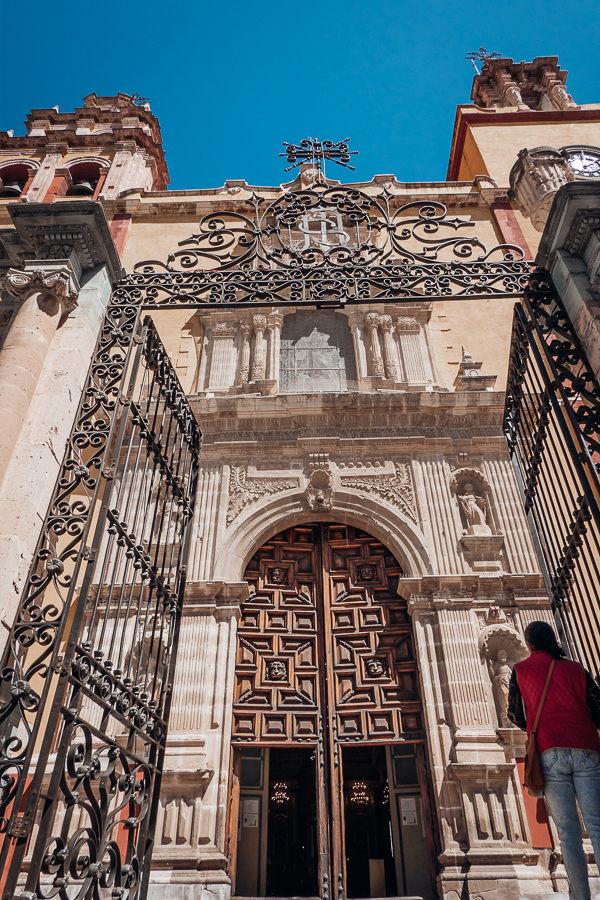


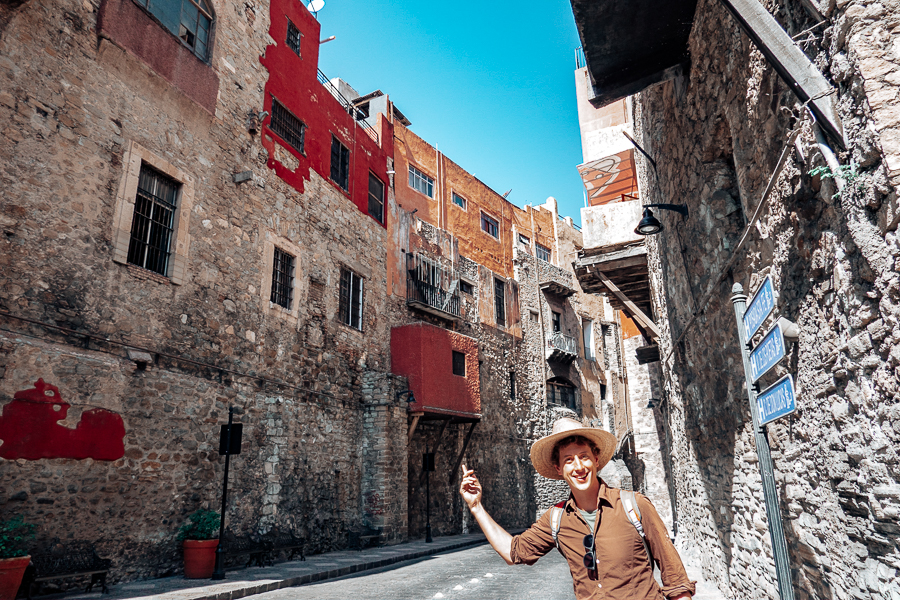
The Birth and Evolution of the Cervantino Festival
It was at that initial trip where we fell in love with Guanajato that our friends introduced us to the idea of coming back during the Cervantino festival, which was a festival started by Enrique Ruelas in order to celebrate the writer Cervantes of “Don Quixote.”
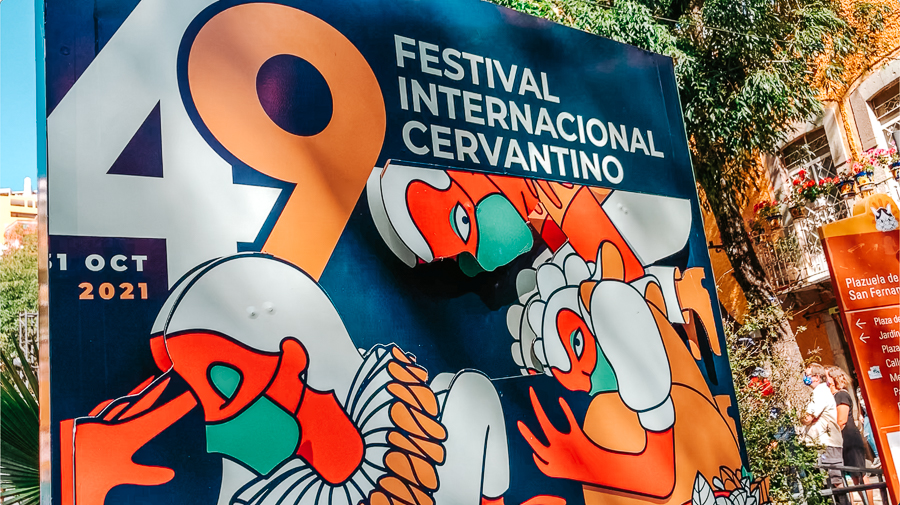
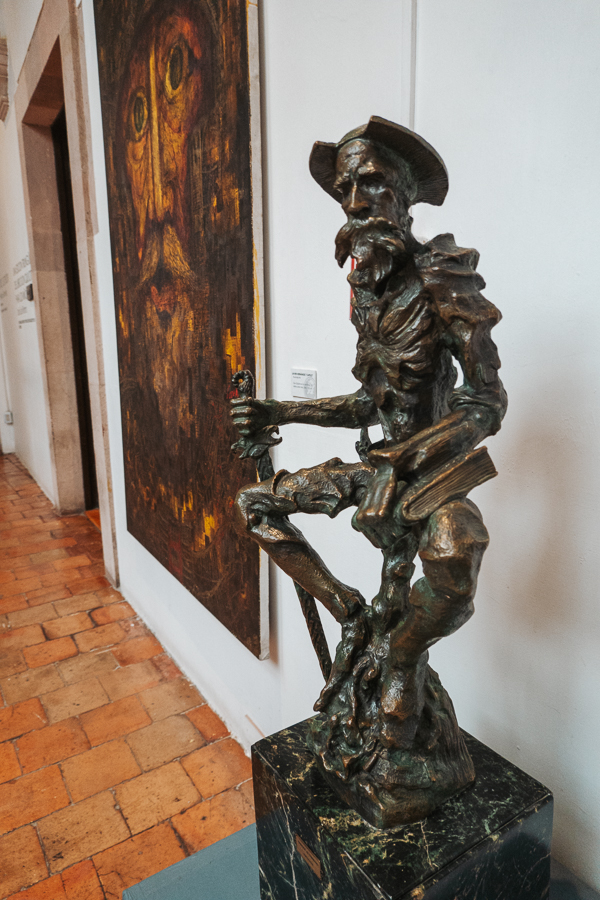
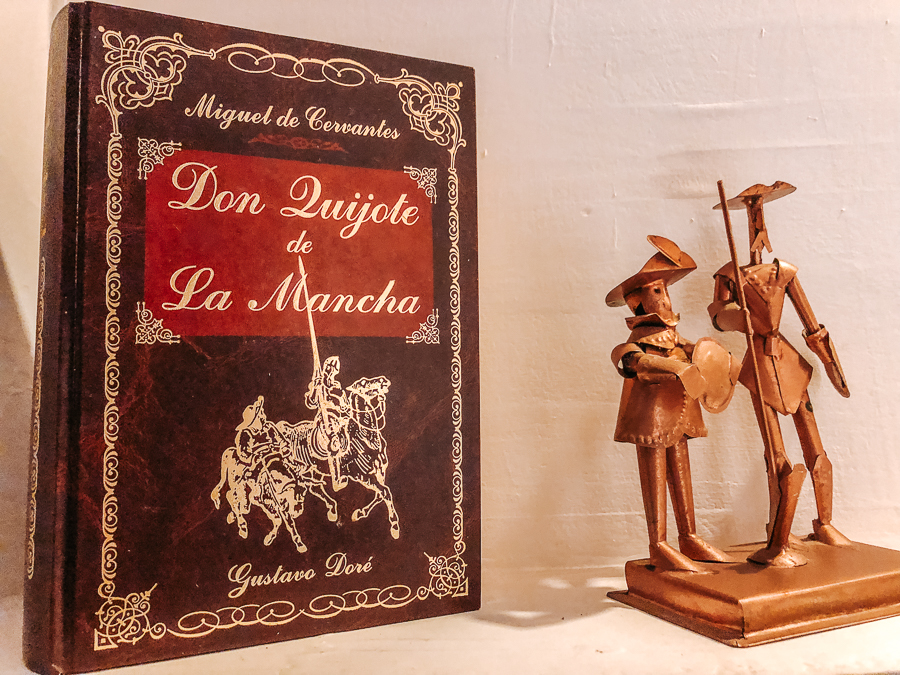
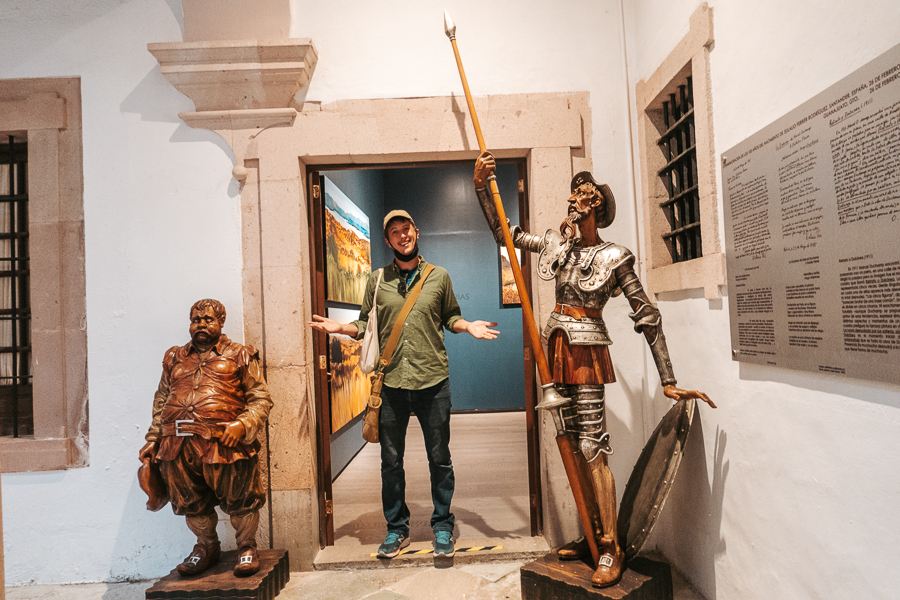
It was Enrique Ruelas, a theater professor at the University of Guanajuato, who is the father of the Cervantino Festival, uncovering its origins to 1953. An avid lover of literature by Miguel de Cervantes, a Spanish author from 17th century Madrid, specifically “The Man of La Mancha,” Enrique wanted to pay tribute to the writer. So he started staging short plays throughout the center of the city, which became extremely popular over time, and laid the grounds for the future festival.
It was in 1972, with help from the Mexican government that the smaller event grew into what we now know as the Festival Internacional Cervantino. It has invited and embraced an eclectic and worldwide array of many different artists and genres. It also boasts the biggest and longest-running Latin American festival in the world. Over the past few decades it has continued to evolve and expand, introducing a diverse range of performances, with music, theater, dance, visual art, literary and cinema to name a few, bringing bigger and more international audiences flocking from across the globe.
It is an amazing cultural and artistic celebration that pays homage to Guanajuato’s rich tapestry and love of culture and art. Whether it is a classical orchestra, avant garde modern dance, opera, or contemporary theater and art installation, contemplative cinema or literary readings, the modern cervantino festival is a truly eclectic experience. For example in 2024, over 2,200 artists from 24 countries were spotlighted with 133 performances and 35 visual art exhibitions.
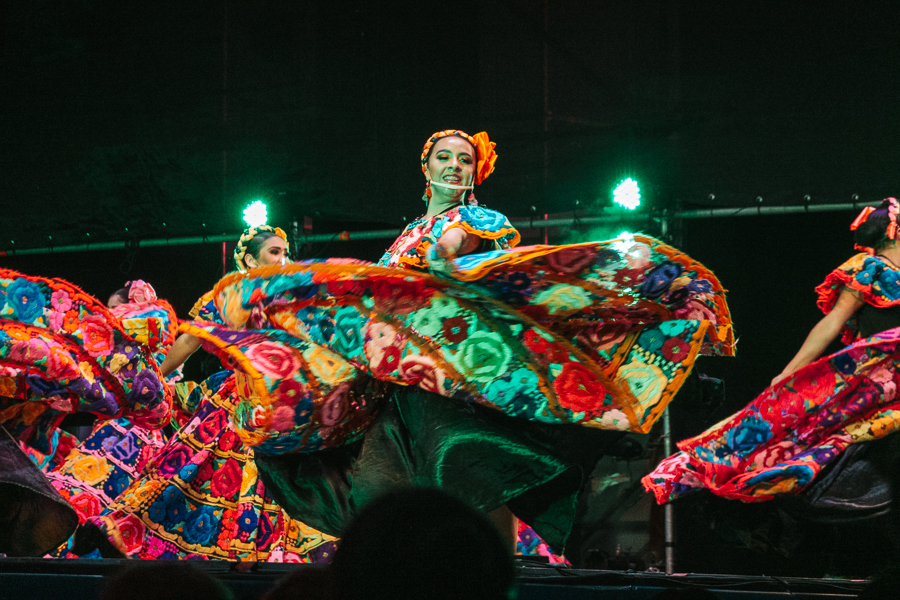
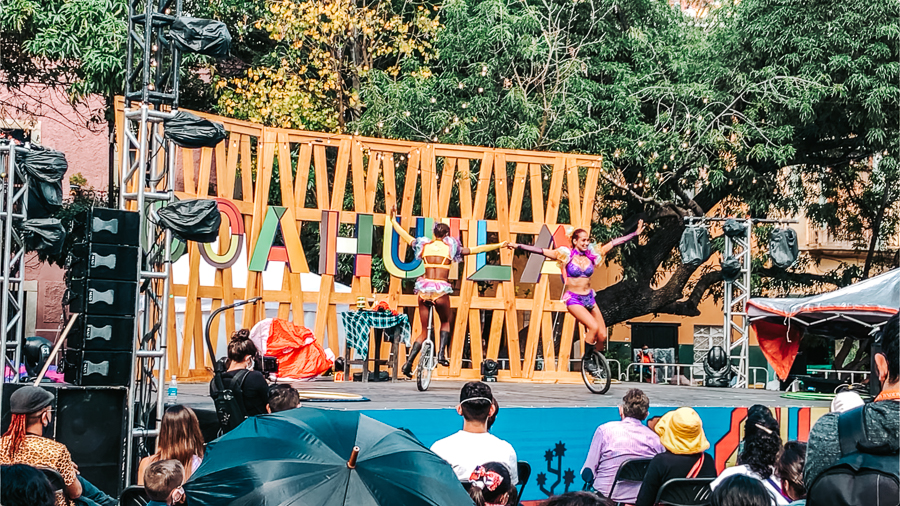
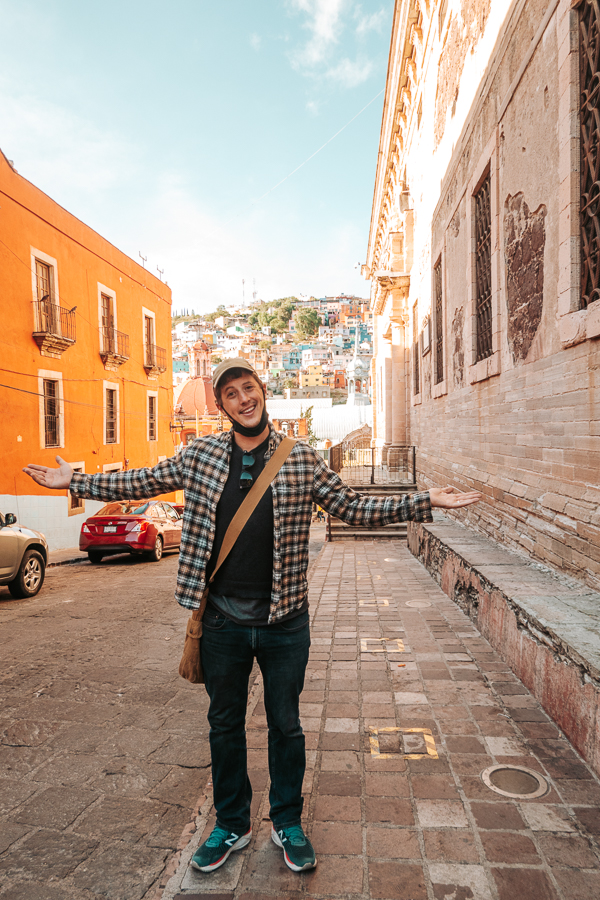
Experiencing the 2021 Cervantino Festival
Although this 2021 edition of the Cervantino Festival was quite small in comparison to typical previous years, filling up only 30% capacity in contrast, due to the city’s strategic efforts to keep social distancing in place during all of the festivities, this year of the festival, our first and so far only time, was absolutely exceptional and memorable.
From October 13 until the 31st the festival held 98 performances, forming a “hybrid” festival since 71 were in person and 27 of them were virtual. There were so many different types of events, from cultural to arts, to theater, to performance and dance, to concerts, art exhibitions, cinema, literary and more. There was an emphasis this year on bringing in high-quality international avant-garde artists, representing more than 20 countries.
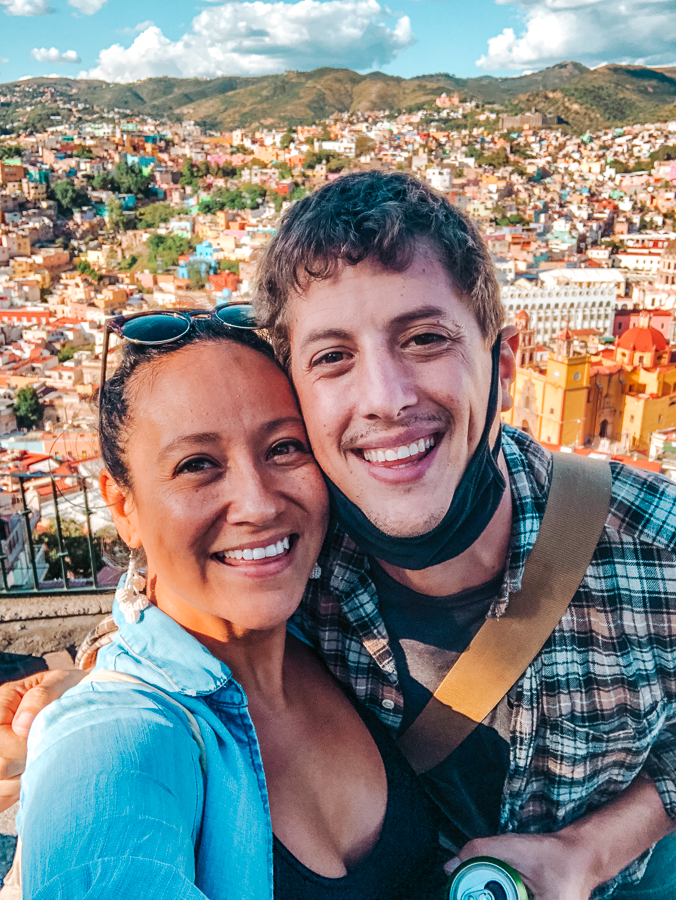
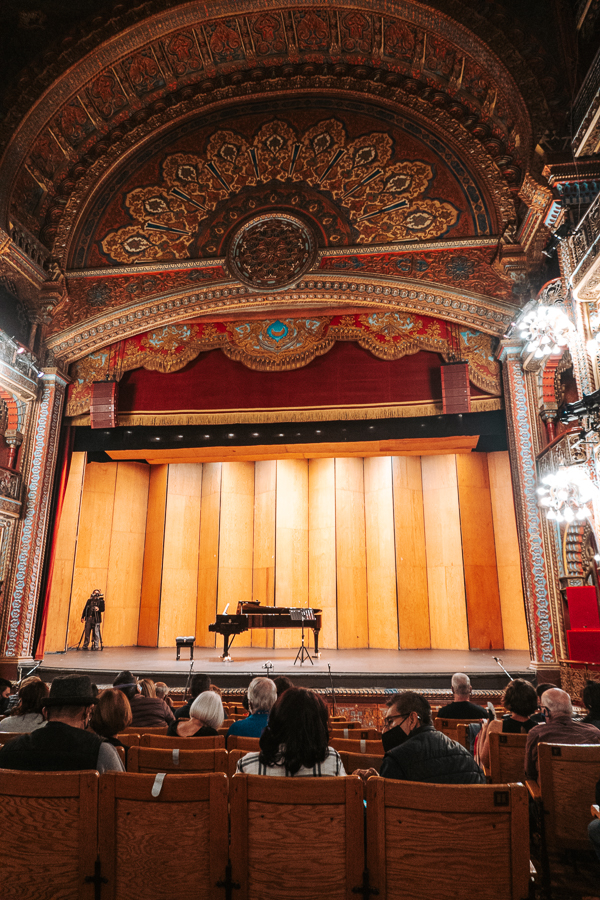



Kicking Off Our Trip
As we walked down the little neighborhood street from our airbnb the first night we were impressed by a gigantic art installation projection mapping on the super tall steps leading up to the gorgeous University of Guanajuato. One of the reasons Guanajuato is pulsating with such vibrant and youthful energy is due to the fact it is a university town.
As we kept walking through the winding cobblestone streets of Centro Guanajuato, at the bottom of this little valley, towering sides of the mountains rose up on either side and around every corner was another adorable cafe, restaurant, bar or tienda to explore. Colorful pieces of fabric decorated the sky above our heads on these streets, or little strings of lights or lanterns.
Reaching the Center of Town
Once you reach the main square plaza at Jardín de la Union, you will find the pretty gazebo at the very center of the zocalo, a myriad of square gardens, paths and medieval royal type trimmed hedges and trees. This area is the throbbing heart of the city and you could spend hours sitting on one of the benches simply people watching and listening to the many mariachi troupes coming in and out serenading couples or groups. One day we randomly came upon an amazing (and free) classical orchestra concert happening in the gazebo as part of the Cervantino Festival schedule.
Once you exit the gardens you will come across the next two largest buildings in this plaza: the Iglesia de San Diego and Teatro Juárez.



Jardín de la Union
Once you reach the main square plaza at Jardín de la Union, you will find the pretty gazebo at the very center of the zocalo, a myriad of square gardens, paths and medieval royal type trimmed hedges and trees. This area is the throbbing heart of the city and you could spend hours sitting on one of the benches simply people watching and listening to the many mariachi troupes coming in and out serenading couples or groups. One day we randomly came upon an amazing (and free) classical orchestra concert happening in the gazebo as part of the Cervantino Festival schedule.
Once you exit the gardens you will come across the next two largest buildings in this plaza: the Iglesia de San Diego and Teatro Juárez.
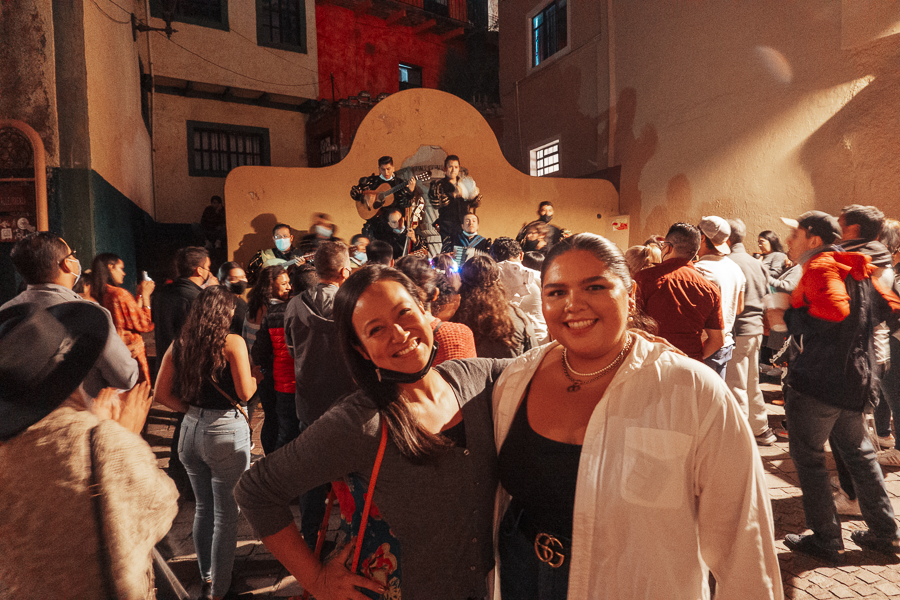
Callejoneada Tour
In front of the church we saw several performances by the local troops of callejoneadas, groups of singers and dancers dressed in 16th century Spanish garb singing and performing traditional Mexican music with instruments like accordions, trumpets, guitars and violins and taking large groups of people on walking tours through the tiny alleyways or “callejones” that wind up and down the hillsides on either side of the centro of Guanajuato. They perform stories of romance and comedy, entertaining the groups with a feeling of a time long past. Many of these young callejoneadas are students at the University of Guanajuato.
We were happy to experience a callejoneada tour on this trip and would highly recommend it to any person visiting Guanajuato.


Iglesia de San Diego
During the sunny days in Guanajuato we found many artists setting up easels with their beautiful paintings in front of the Iglesia de San Diego as well.
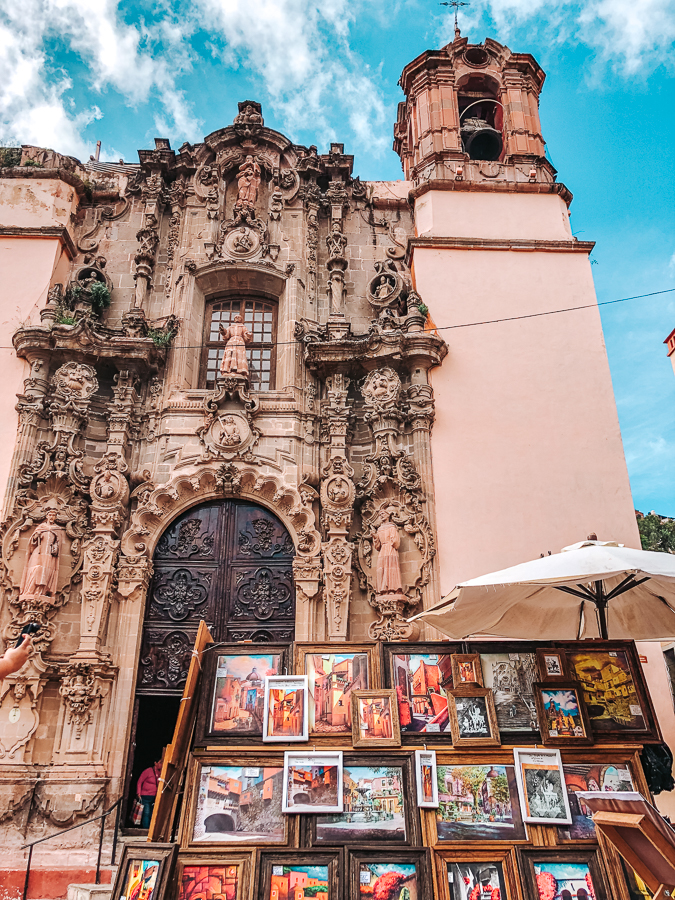
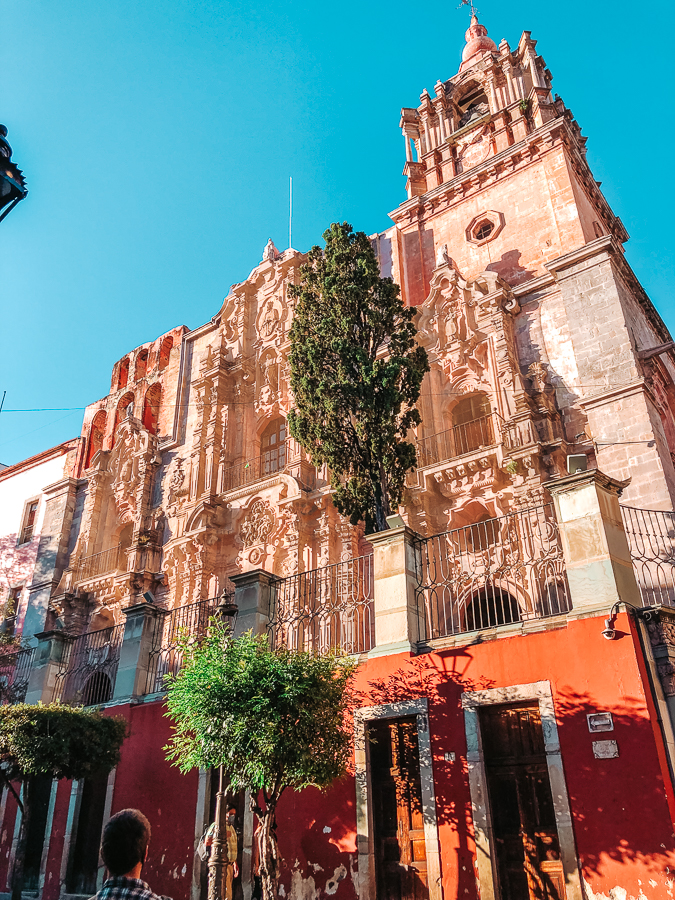
Teatro Juárez: A Beacon of Cultural Excellence
Once at the Iglesia de San Diego, you won’t be able to miss the incredible Teatro Juarez to the left. The building for the theater began in the 19th century (1873). Before its construction, the San Diego de Alcala convent was on the same site, and then later the Emporio Hotel. The theater didn’t open until 1903 by the president of that time, Porfirio Diaz. This theater is absolutely spectacular to look at with its grand columns, and mix of styles ranging from Neoclassical, French and Mozarabic influences. On top of the giant neoclassical columns and rooftop, rise 8 imposing bronze statues who stand for the 9 muses of Greek mythology (Caliope, Clio, Erato, Euterpe, Melpomene, Polyhymnia, Thalia, Terpsichore, and Urania).
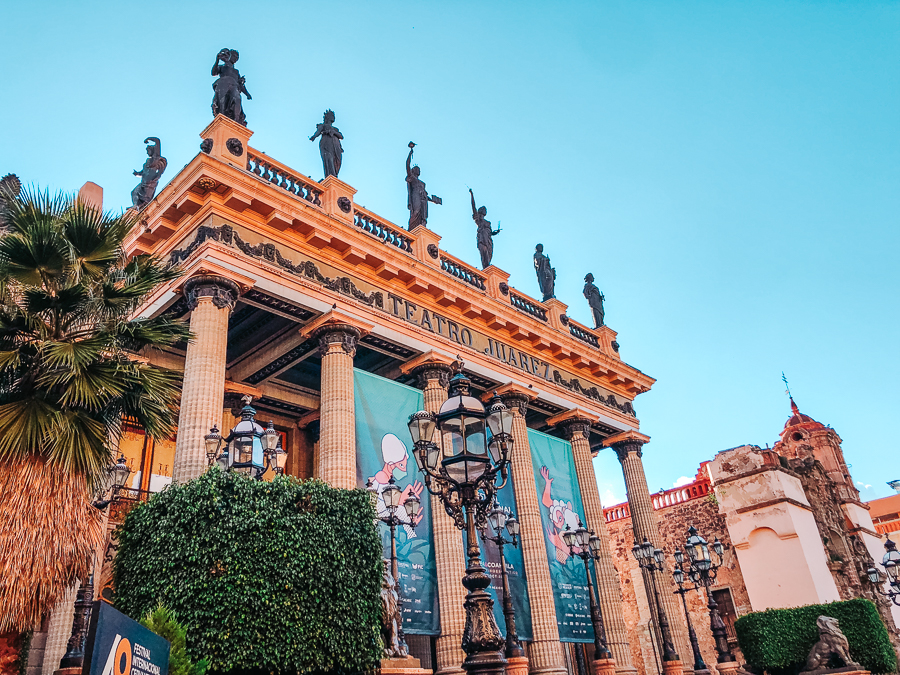
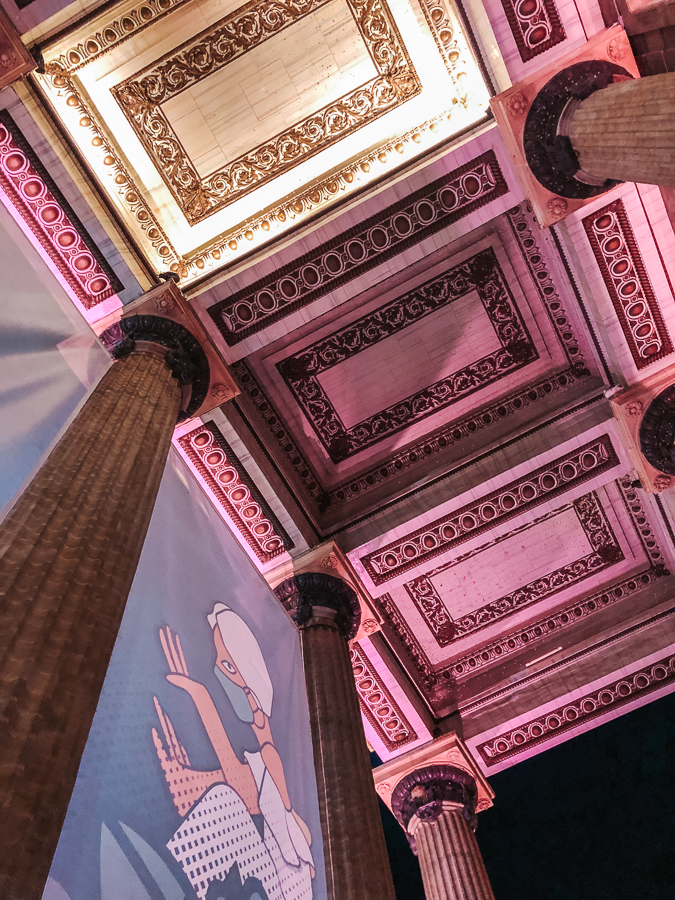
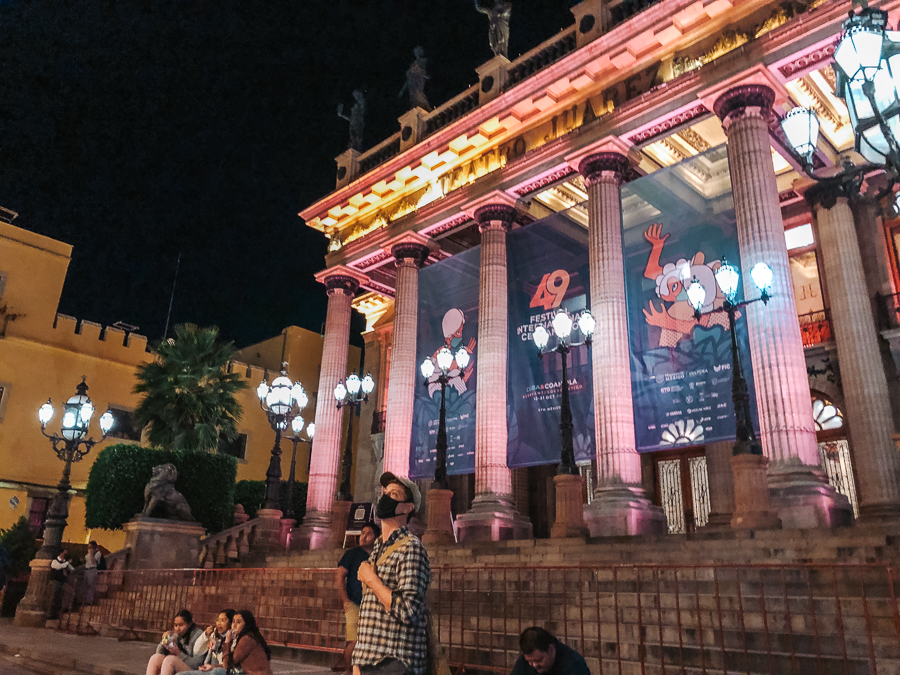
Inside Teatro Juárez
Once you enter the theater you see the Moorish and French elements inside and past the main foyer section dotted with over the top chandeliers, you either head to the large main theater or the little bar to the left. The interior is adorned with plush velvet seats and several stories high. The 2nd story balcony seats offer a glass panel flooring and there is a huge, lavish chandelier above the whole interior. There are Moorish elements of stained glass and carved wood. The beautiful bar takes you back in time as you sip on a glass of wine marveling at all of the complex wood engravings and the huge stained glass window all around you.
We were lucky to see this beautiful sight several times throughout our stay for the Cervantino Festival. We saw the amazing opera singers, Alejandra Lopez-Fuentes and Alejandro Reyes-Valdes, and it truly touched us and became an experience we won’t ever forget. Going to Teatro Juarez was certainly a highlight of our entire trip.
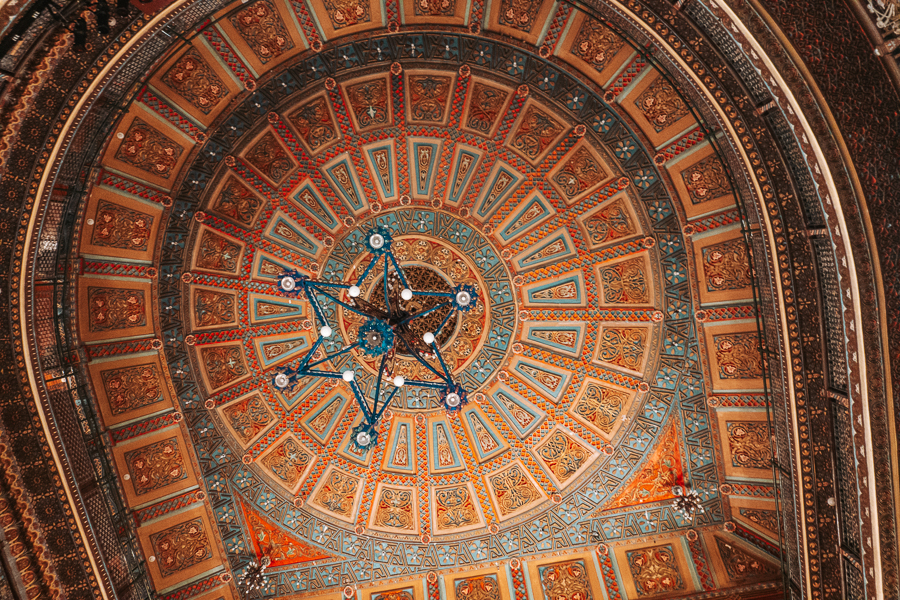

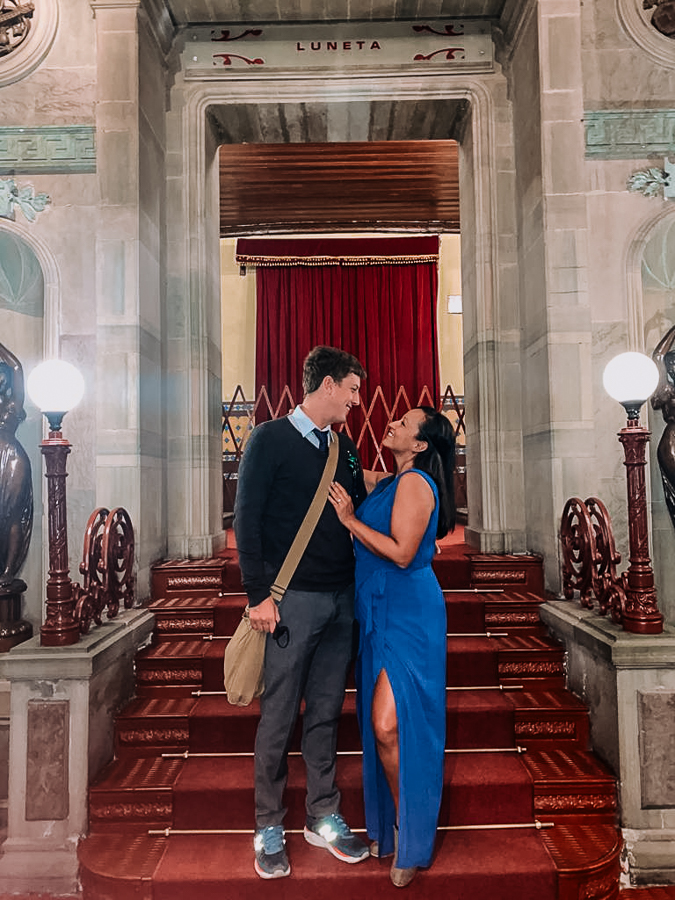

We got tickets from the ticket booth on the side of the theater in advance and they were exceptionally affordable! When we first arrived in Guanajuato for this trip we each obtained a thick pamphlet of the schedule of performances of the whole festival, which proved to be very useful as we could choose which performances we wanted to see and get the tickets in advance. There were honestly so many that it was hard to choose as there would be many different acts of different genres and sizes happening across the city.
During the festival there were a myriad of literary talks and cinema screenings featuring avant garde artists, writers and filmmakers from around the world.
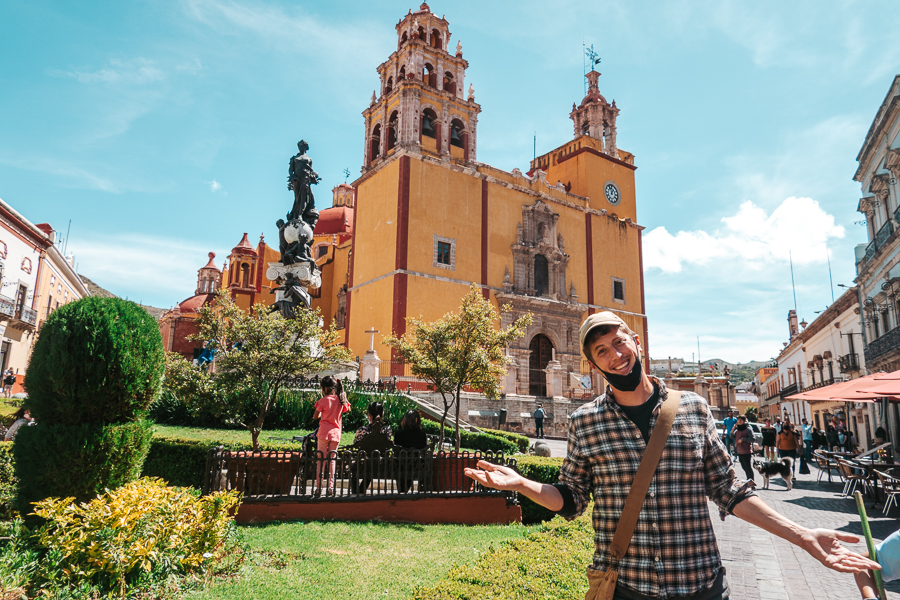
Walking around the City
Museums and Artistic Encounters
In between festival events we also had some time to visit a couple of the notable museums in the city including Museo del Pueblo de Guanajuato, Museo Iconográfico del Quijote and Museo Regional de Guanajuato Alhóndiga de Granaditas (the war place that was a fortress). It is also worth going to Museo Casa Diego Rivera, one of the most famous artists of Mexico besides Frida Kahlo, his wife. Although we didn’t get a chance to visit on this trip, it is bookmarked for our next visit to Guanajato.
As many places in Mexico, the city is oozing with so much vibrant art, music, architecture and intellectual pursuits. Every corner you turn is another doorway into someones’ passion for the arts and creativity.
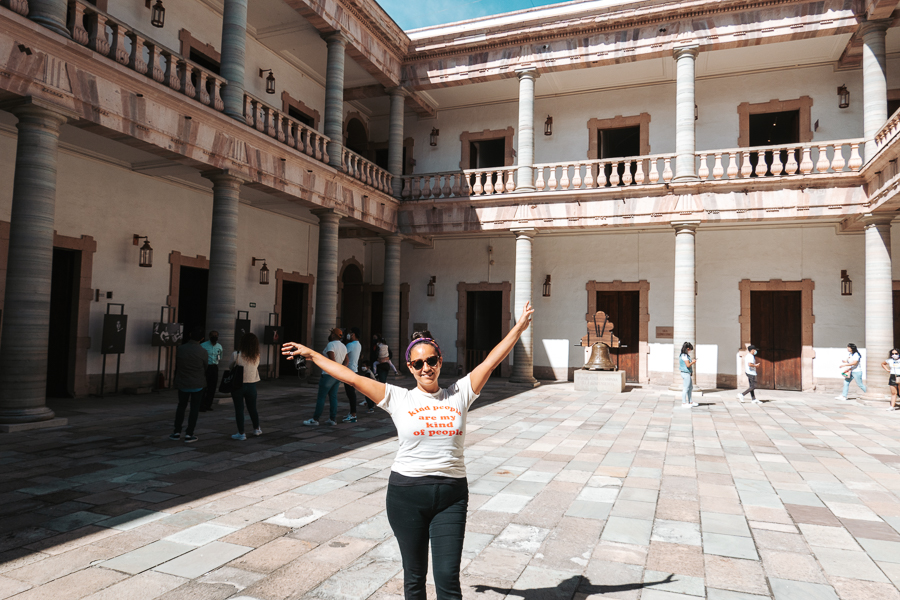

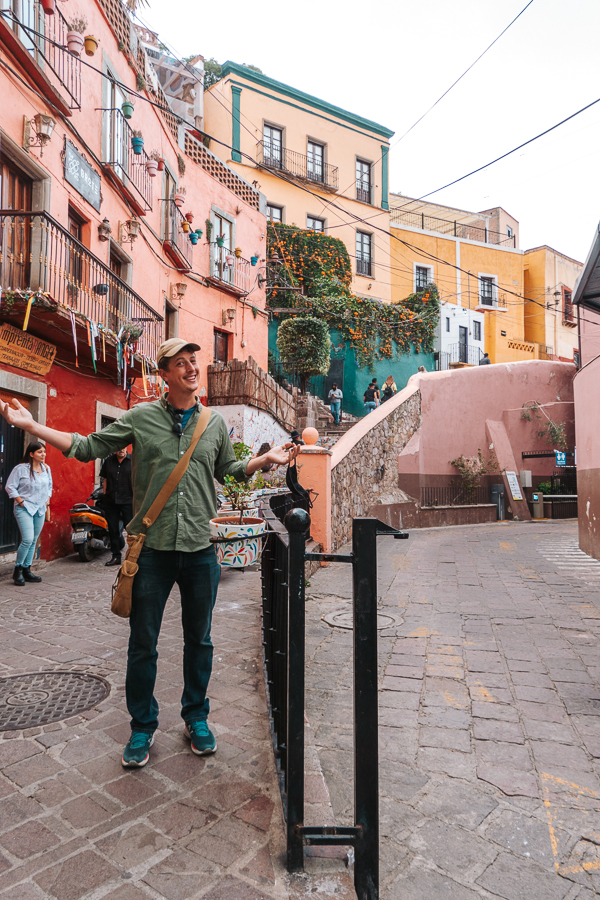
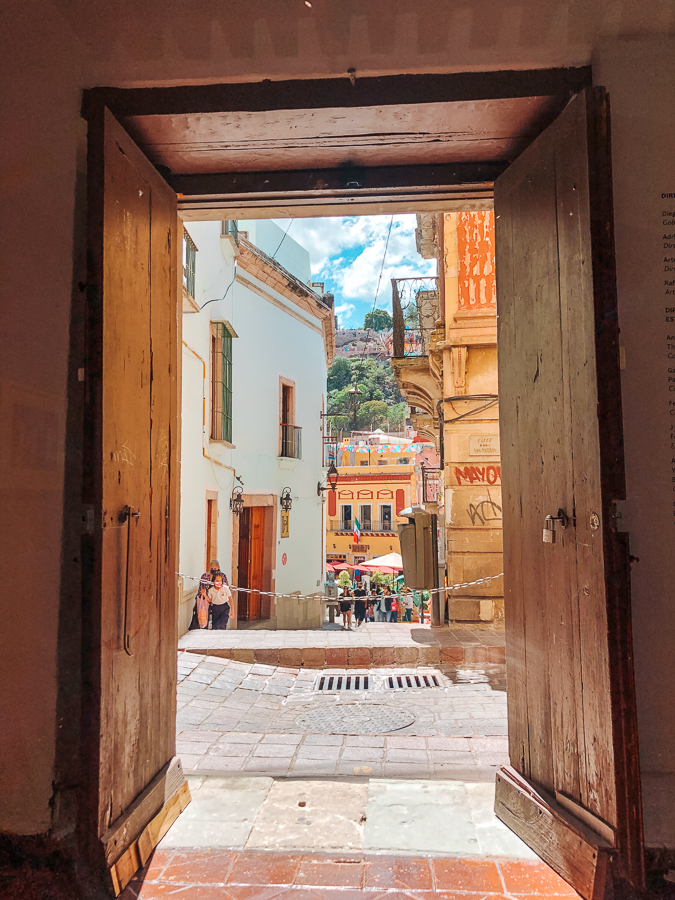
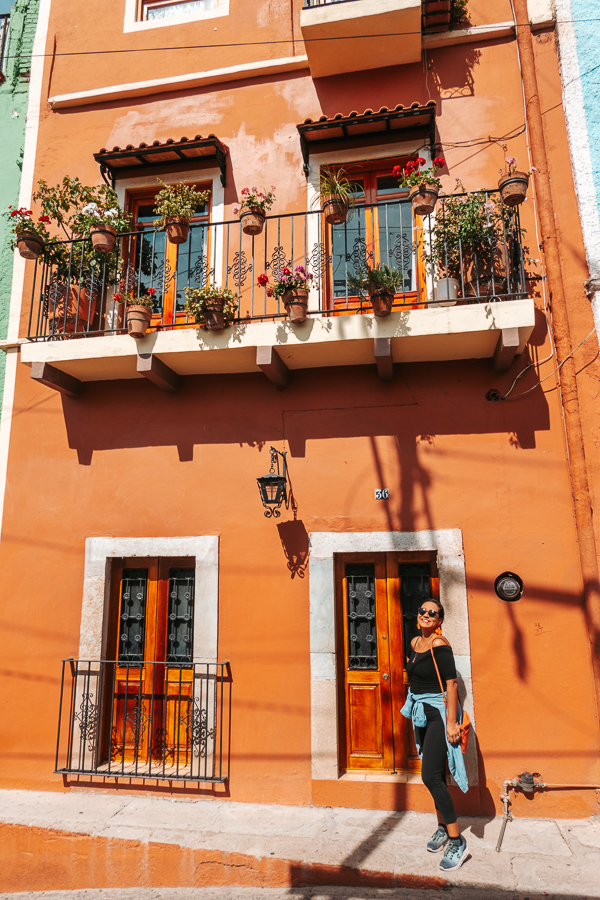
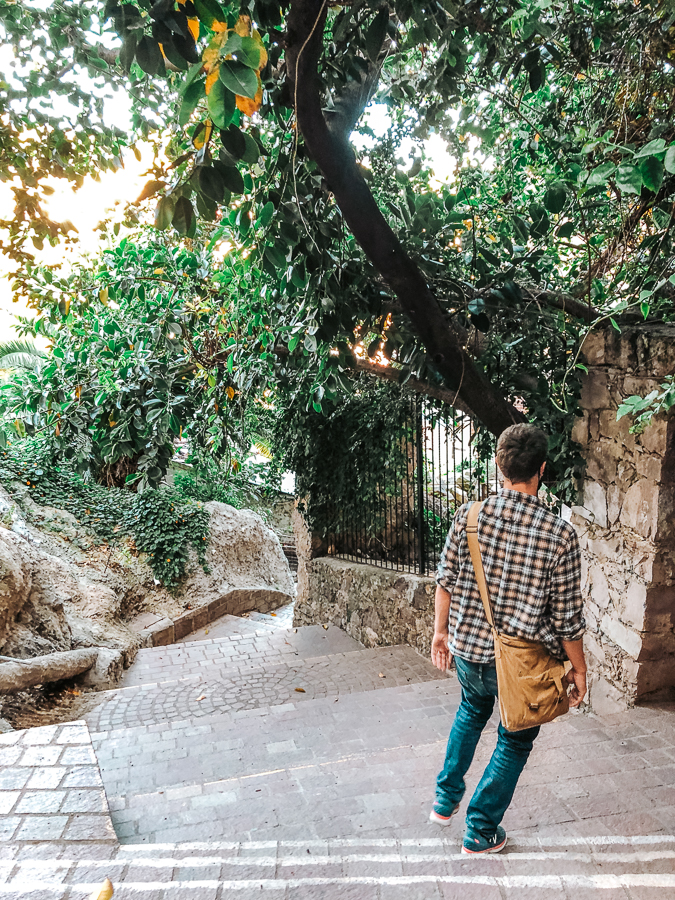
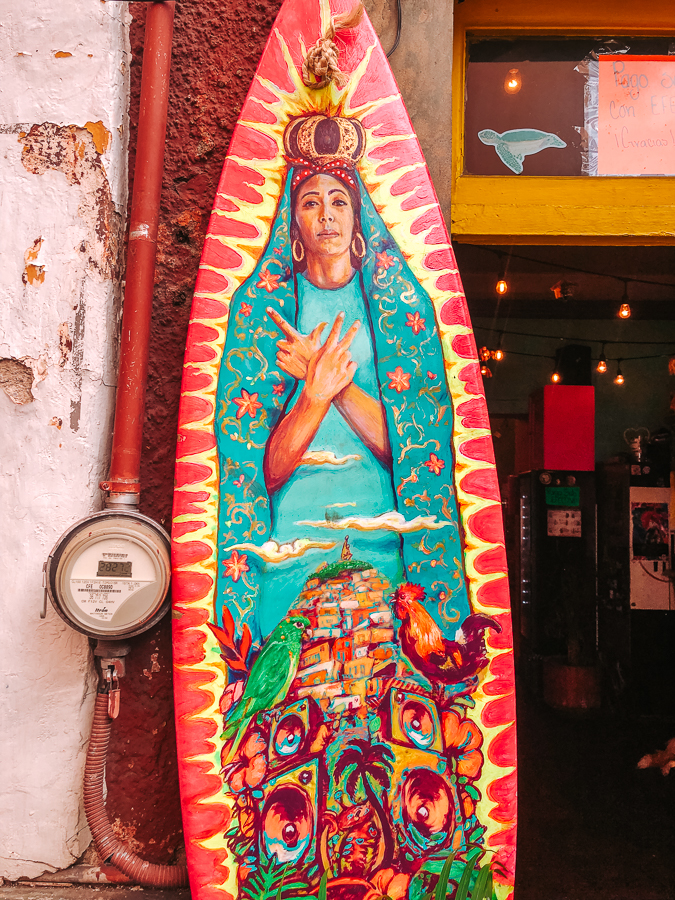
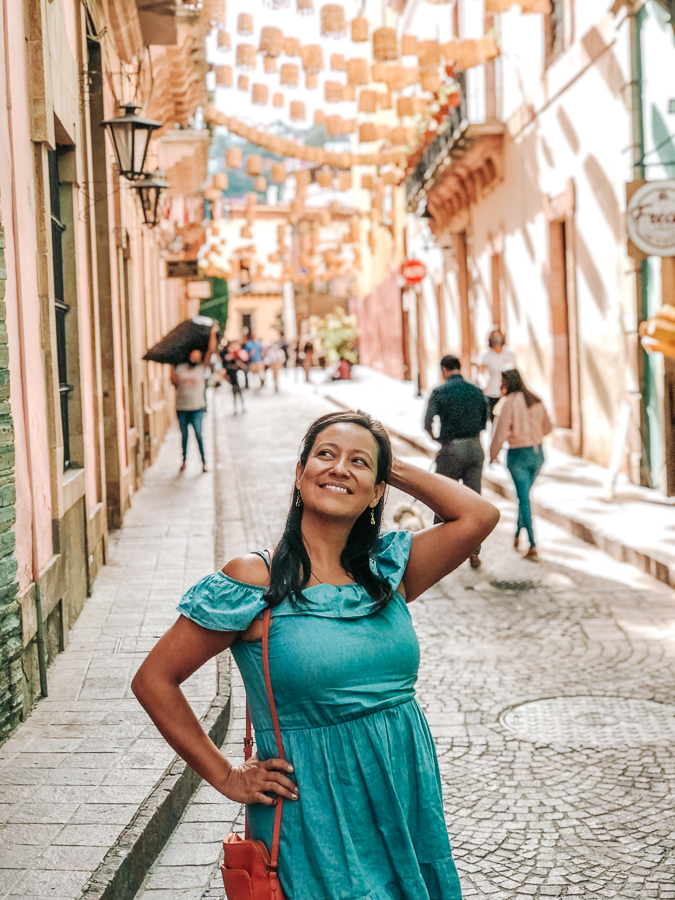

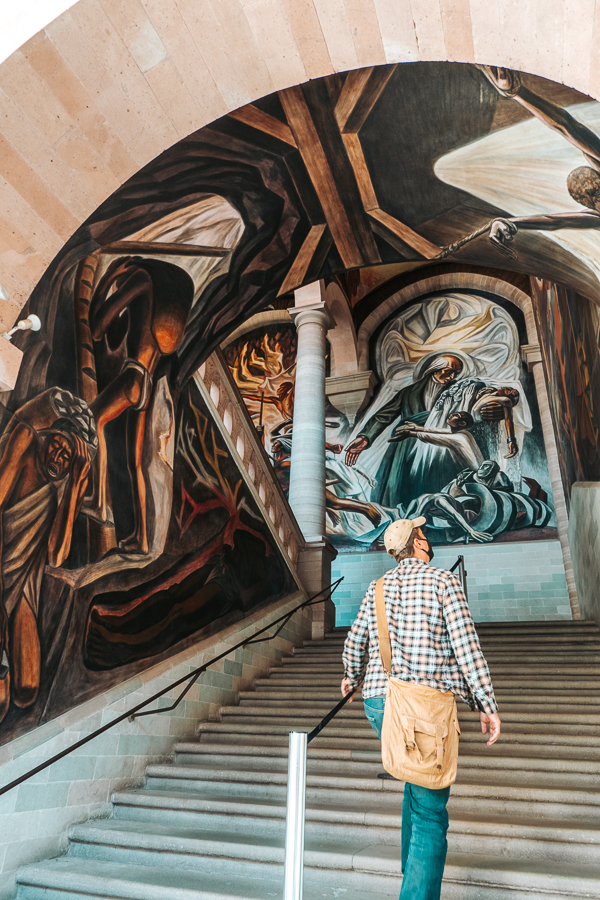
Free Shows & The Kissing Alleyway
On walks throughout the city during the day we would stumble upon smaller free performances part of the Cervantino festival in plazas such as Plaza de San Roque (Plaza de San Fernando), with dancers in colorful silk material dancing across the stage on unicycles.
Walking around the centro you are bound to end up at Callejón del Beso where if you are with your significant other, it marks the perfect spot to declare your love for each other and take a selfie kissing.
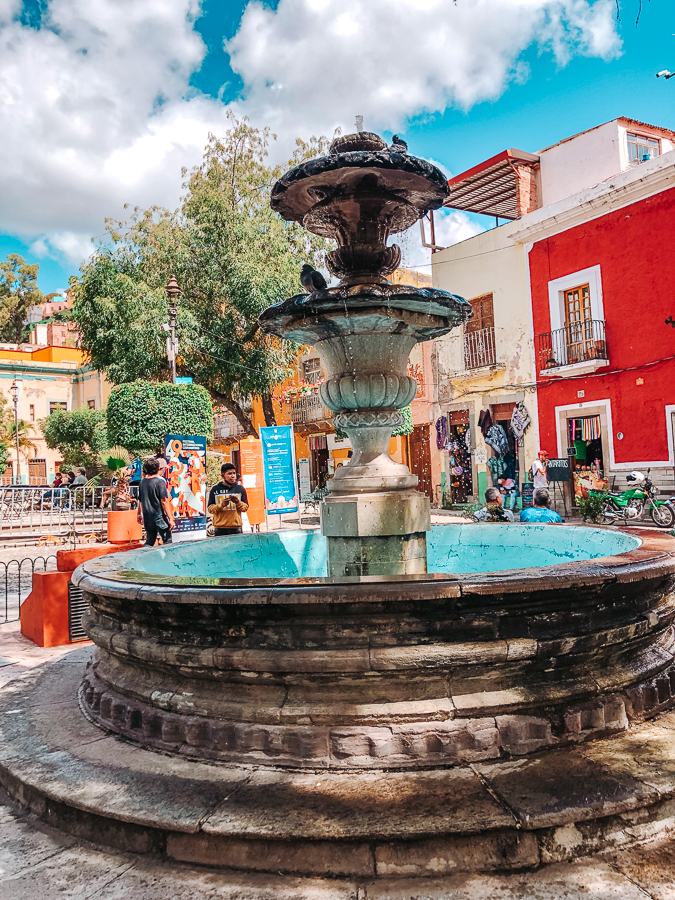

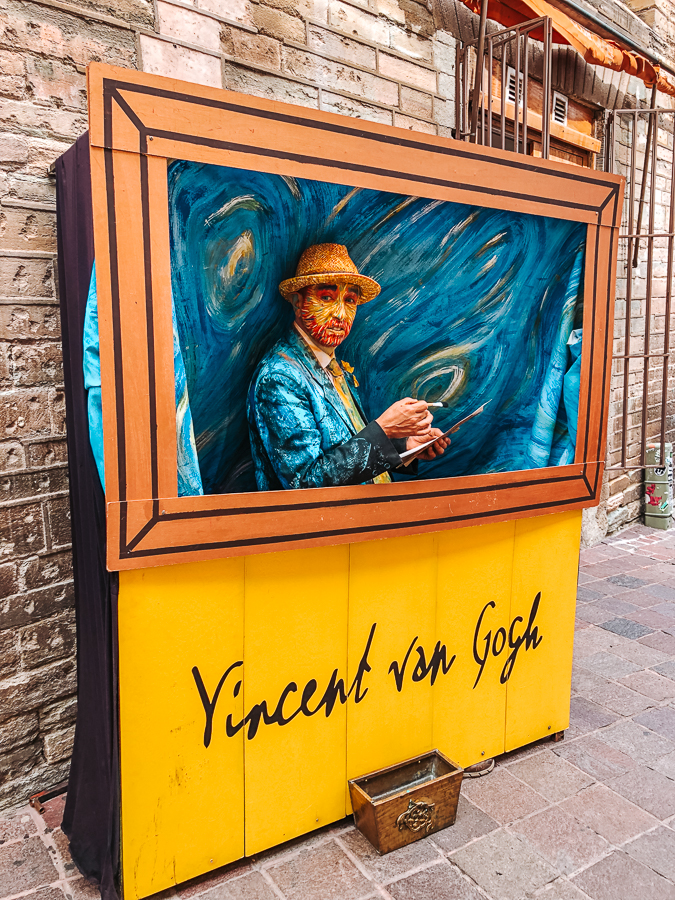
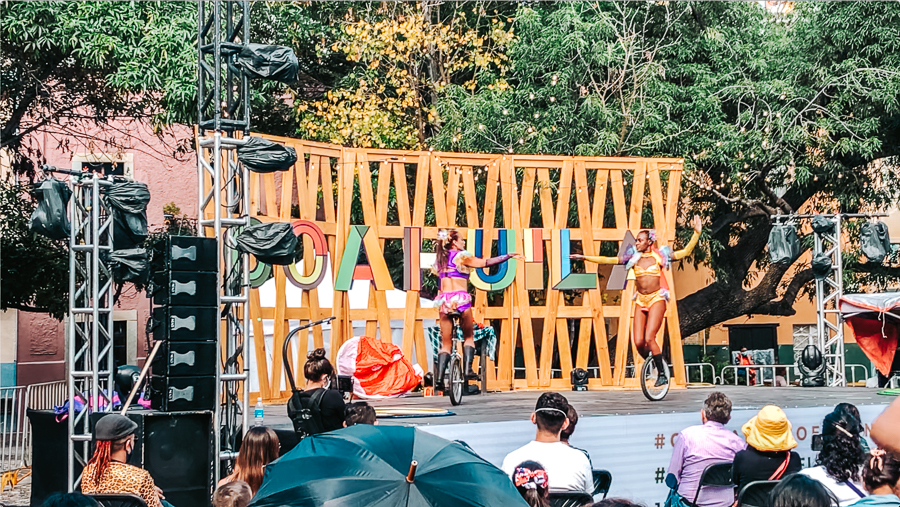
Panoramic Views from El Pípila Monument
As you wind through the many zig zagging callejones (or alleyways) you will find yourself escalating toward a majestic viewpoint of the city – Mirador Hacia El Pipila. El Pipila – a gigantic sandstone colored statue represents the simple miner man named Juan José de los Reyes Martínez Amaro, a hero who was said to be responsible for setting fire to the huge wooden doors of the Alhondiga in 1810, the large stone fortress where the Spanish forces and elite of Guanajato barricaded themselves, and therefore enabling miguel Hidalgo’s insurgent army to enter and successfully attack the Spanish, thus beginning the early stages of the Mexican War of Independence from the Spanish crown.
As you look up at this huge statue of El Pipila you are reminded of the fierce history of this colorful city as you then turn around from your perch and take in the breathtaking vistas of this gorgeous place nestled in the surrounding mountains. It is truly a spectacular viewpoint you must come visit on your trip to Guanajato. Around the area in our initial visit to Guanajato, on our friends tour Guanajuato Food Tour, we were introduced to the delicious street food at the various food carts dotting the little square next to El Pipila. Be sure to try some of the delicacies there including, tlacoyas, gorditas, sopes to name a few.
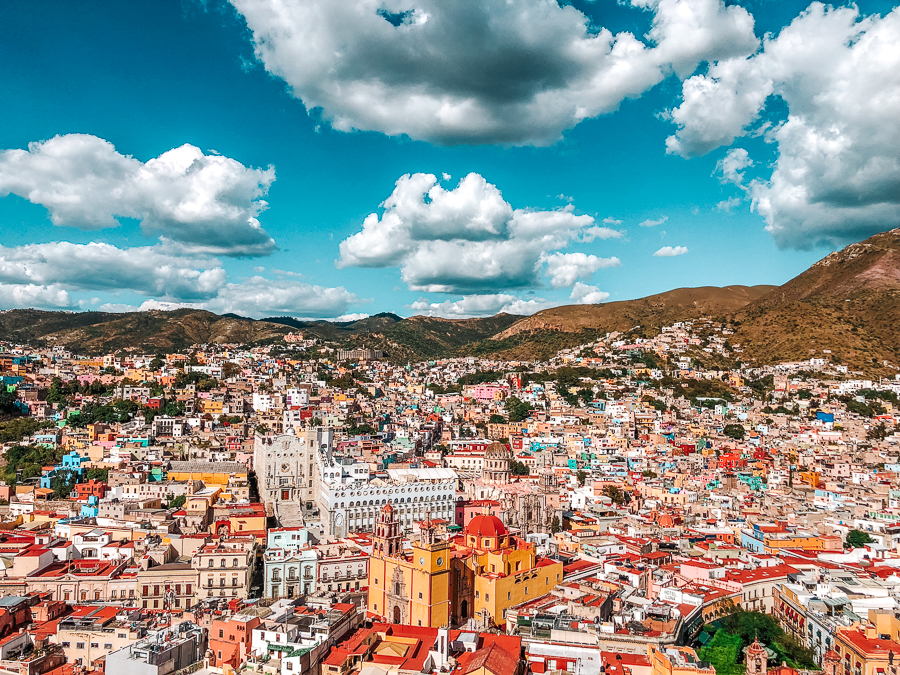
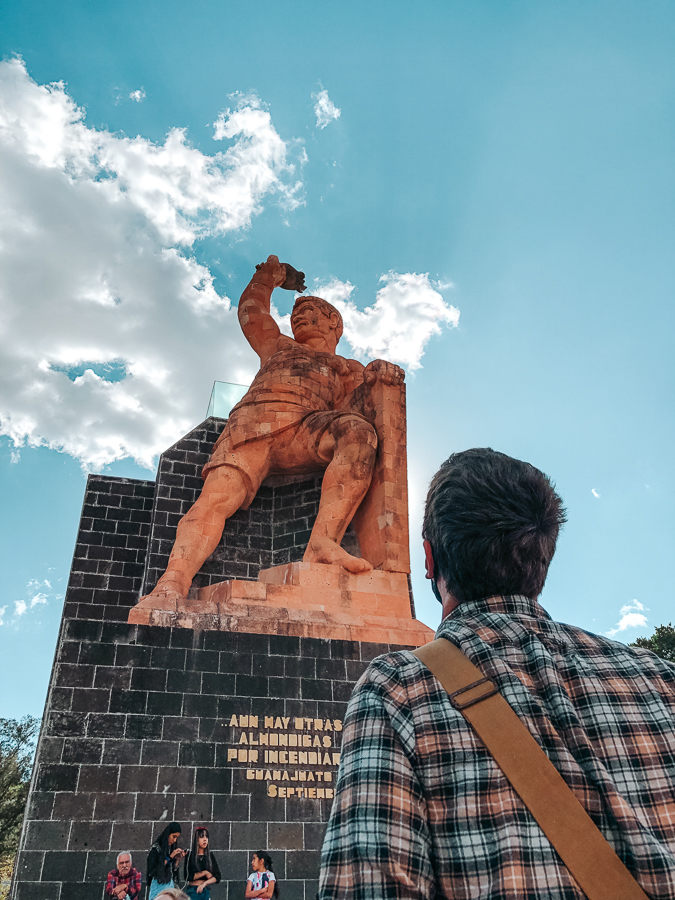
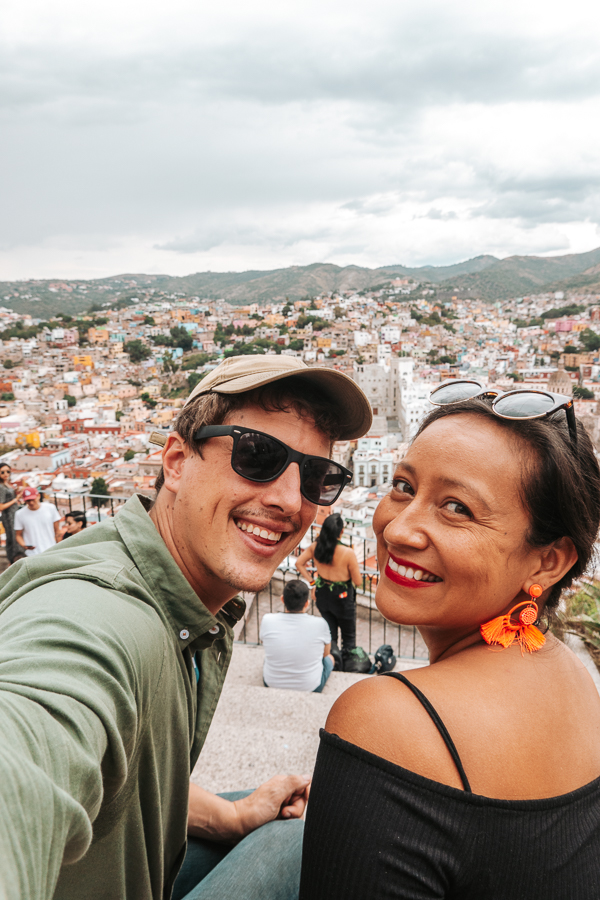
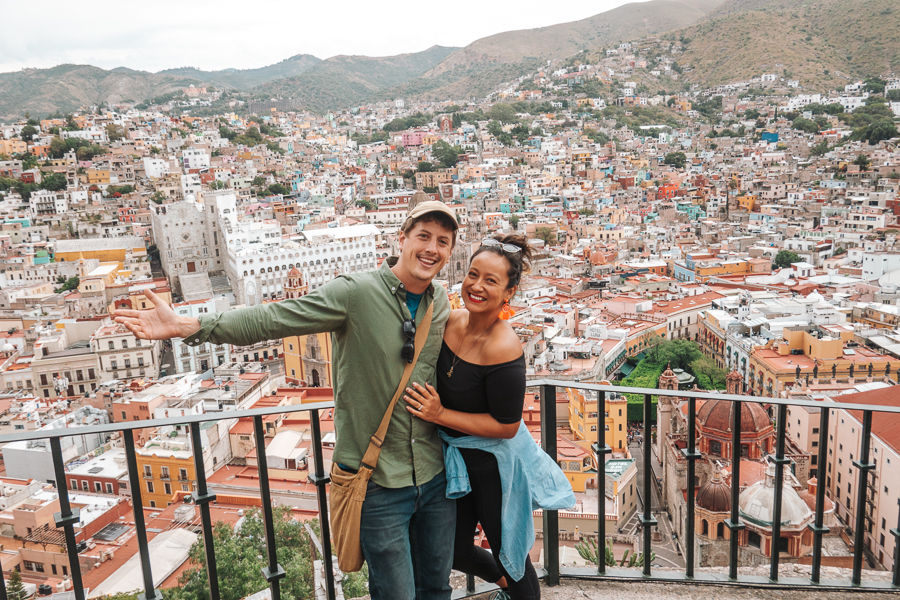
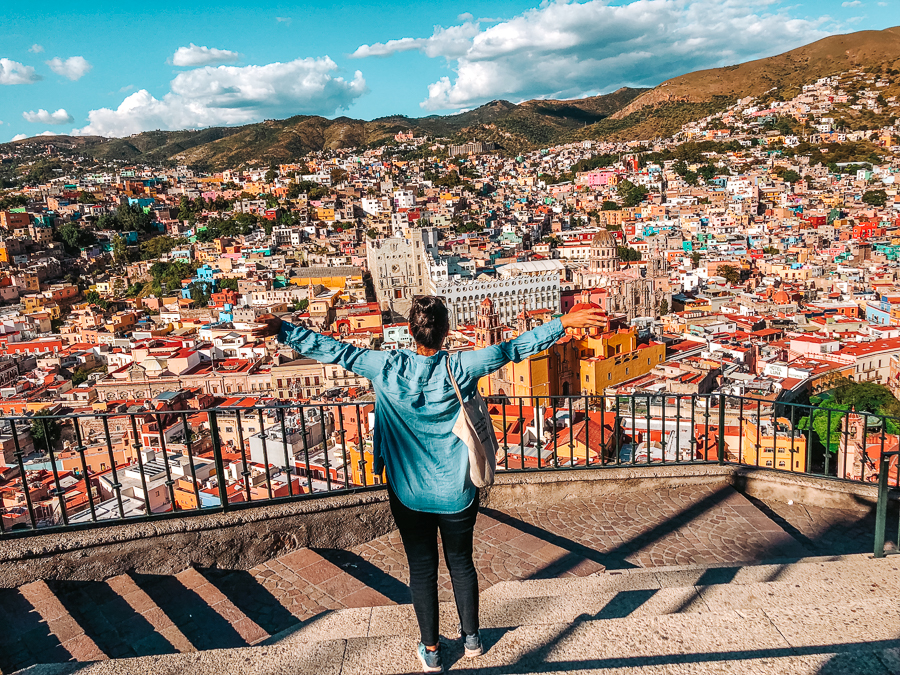
Mercado Hidalgo: A Feast for the Senses
We were delighted to be in this magical city during the time leading up to Dia de los Muertos, one our most favorite holidays in Mexico. We decided to check out the large main mercado in the south of the city – Mercado Hidalgo to check out all of the wares dedicated to this holiday.
We were impressed by the wide range of marigold flowers, also known as cempasúchil or flor de muerto as well as the beautiful magenta Cockscomb flowers: also known as Terciopelo Rojo. We also found a myriad of skull candies, and other sacred objects to put on your altar for your deceased loved ones. This mercado is highly recommended as it features such a diversity of artesanal goods, fresh fruits and veggies and local cooked dishes to try. It is colorful, vibrant and an explorer’s paradise, like much of the city!
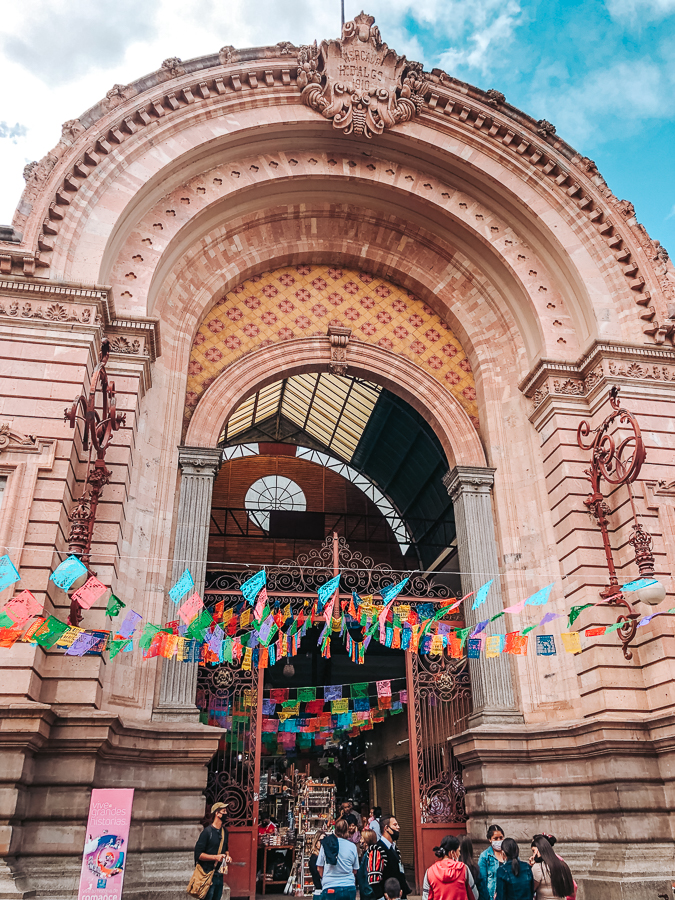


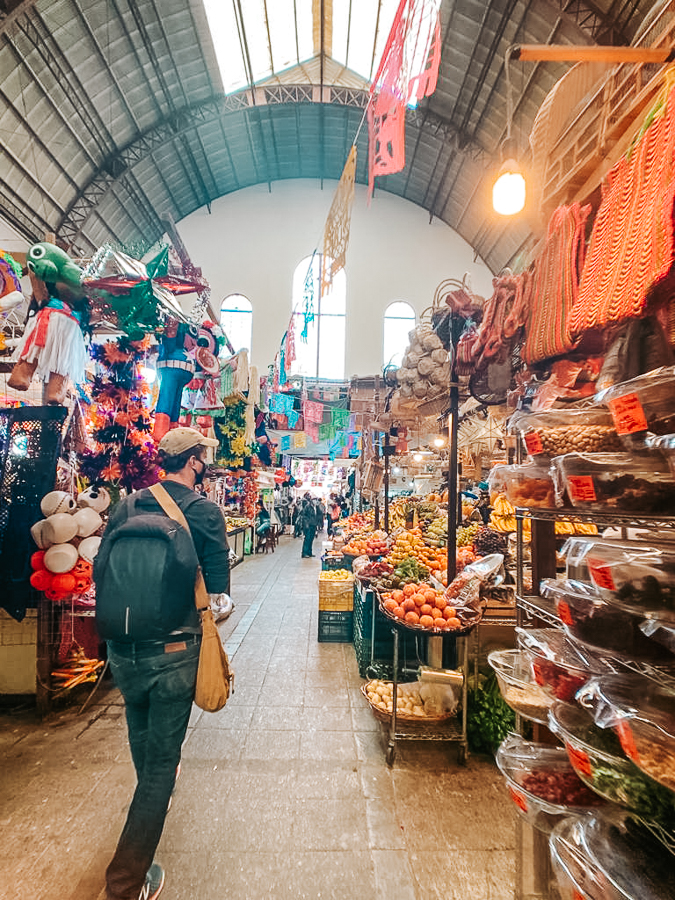
Musical Performances at Plaza de la Alhóndiga
We were lucky to see many magical performances at Plaza de la Alhóndiga– an open air auditorium right behind the historic granary (or fortress), what is now the Museo Regional de Guanajuato Alhóndiga de Granaditas, where Pipila had heroically lit fire to the wooden doors as the insurgents stormed the Spanish troops, marking the beginning of the Mexican War of Independence.

The place was absolutely epic and so were the bands. The first one “Ballet Folklorio” was a blend of traditional Mexican music, some sounding like Mariachi, with dancers dressed in colorful, traditional Mexican dresses and outfits dancing, as well as other folk dances and dress from other parts of Mexico including Chiapa de Corzo with the puffy white wig and mask (“Parachico” dress) and pre hispanic Aztec to name a few.
We also saw Orquestra Nacional De Jazz de Mexico – with the Mexican Suite Guest Artistic Director: Tonatiuh Vázquez Vilchis. The eclectic fusion of latin beats, jazz, singing and orchestra was steller to listen to with its whimsy, and good vibes.
But our favorite concert at Plaza de la Alhondiga had to be Bruno Axel, a conductor, composer, violinist, multi-instrumentalist and musical prodigy from Spain. His concert was about as eclectic, wild and unpredictable as a firework display. He blends together classical music with modern stylistic sounds, combined with a fantastic light show, this was an unforgettable experience.
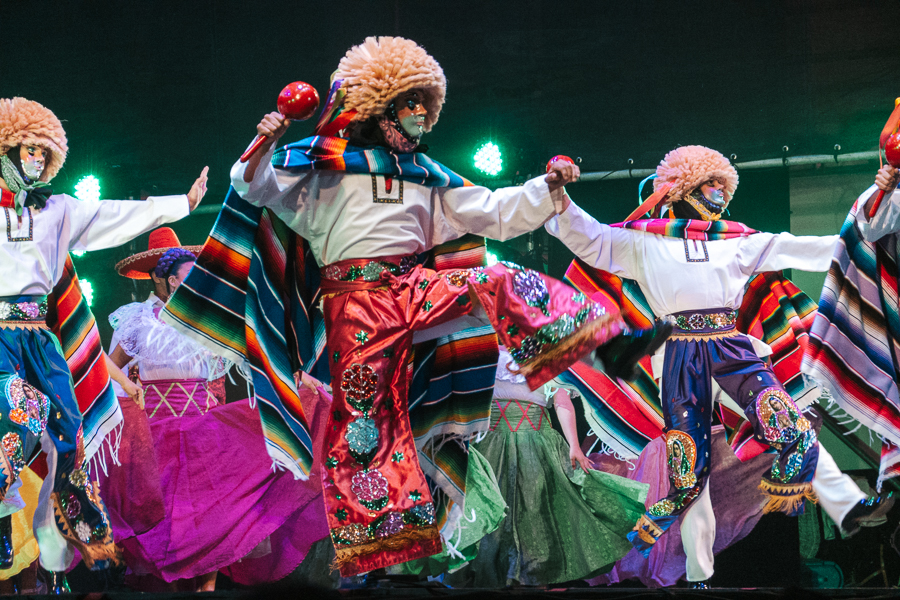

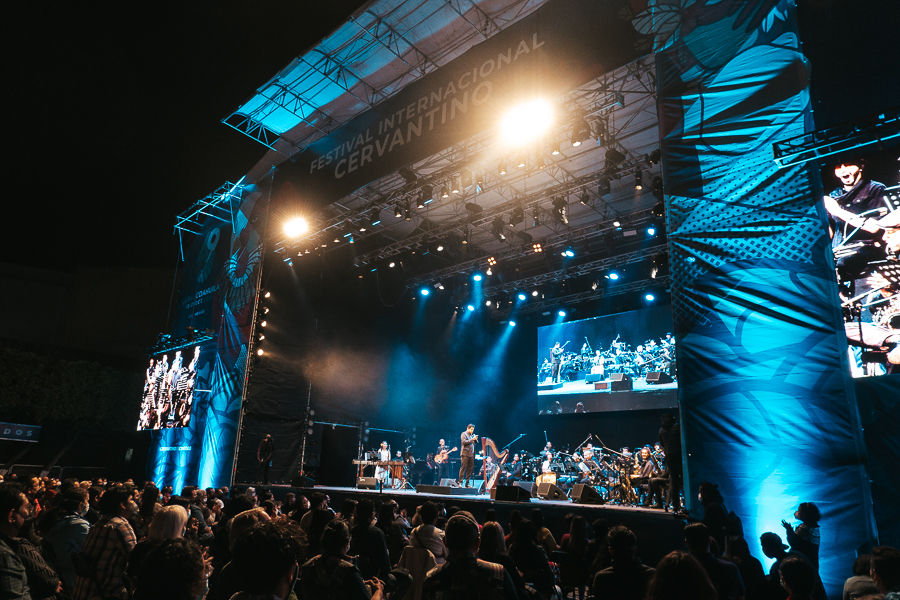
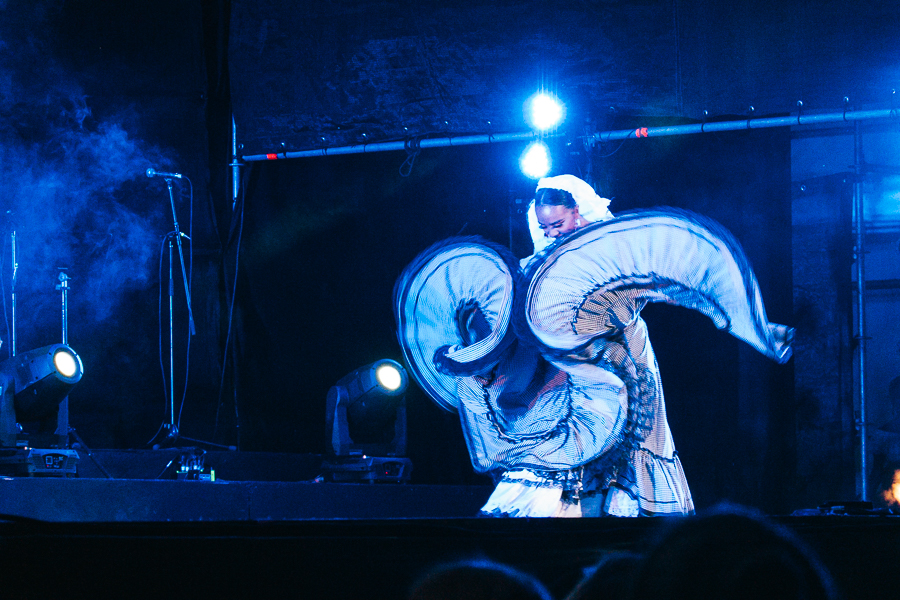

Our Favorite Restaurants, Bars and Cafes
We absolutely loved the amazing views of the city on the outdoor rooftop terrazas of BARTOLA as well as Nigromante Cocktail Rooftop. Bartola is more of a fancy place to enjoy relaxing vibes and sip a fancy cocktail, whereas Nigromante Cocktail Rooftop seemed much more lively and loud, attracting live music, dancing and a chance to meet new friends, like we did!
We are sad that Guanajuatito Mi Amor Restaurant has been permanently closed by now (2025), since we enjoyed many delicious, authentic vegan Mexican meals there including our favorite, their vegan posole, a spicy, and hearty scrumptious meal.
Some of our favorite cafes to get some delicious breakfast and/or coffee included: El Horla, Las Vieyras Restaurante, Panadería 33, and Café Conquistador.
For amazing views of the city, right above Mirador de Pipila, go to Hotel Misión Grand Casa Colorada. We walked up there from Pipila (for a good hike) and had a drink and loved exploring the pretty grounds too.
We were recommended to Restaurante Casa Mercedes for a fancy experience that you need to make reservations for, but weren’t able to make it on this trip. Hopefully next time!
An amazing chocolatería that you must visit is Xocolatl. They make the most delicious array of chocolates that you will ever find and the place is adorable to boot. Make sure to make a stop there and try as many chocolates as your heart desires!
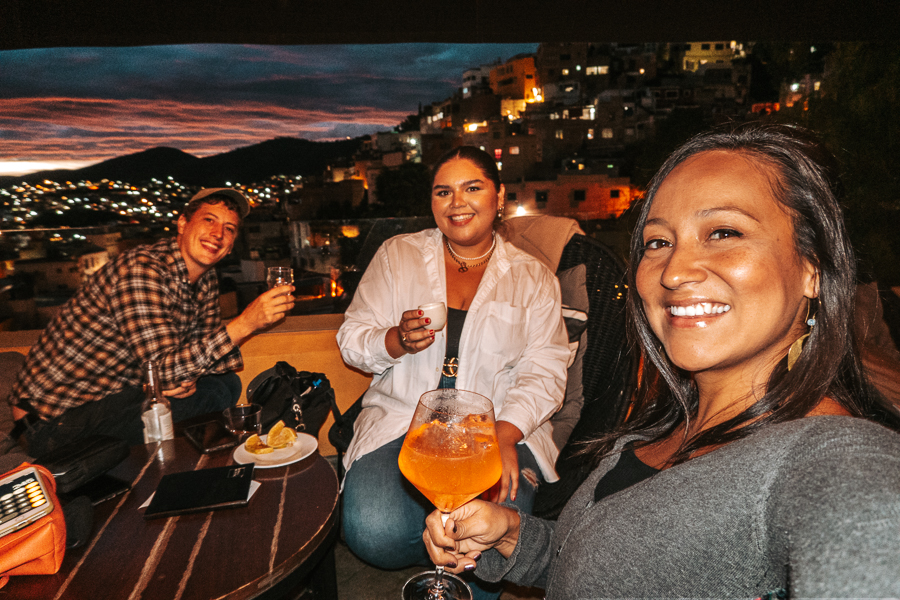
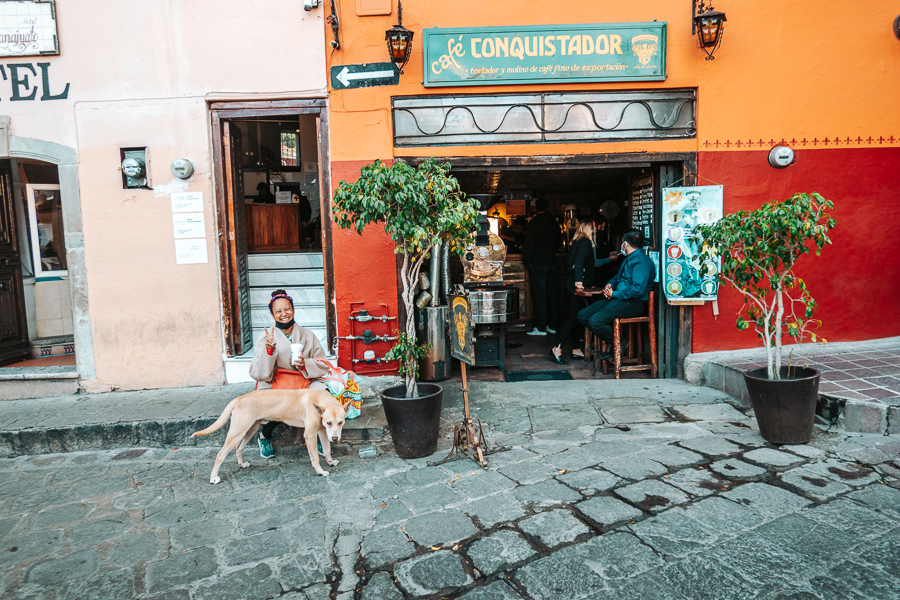

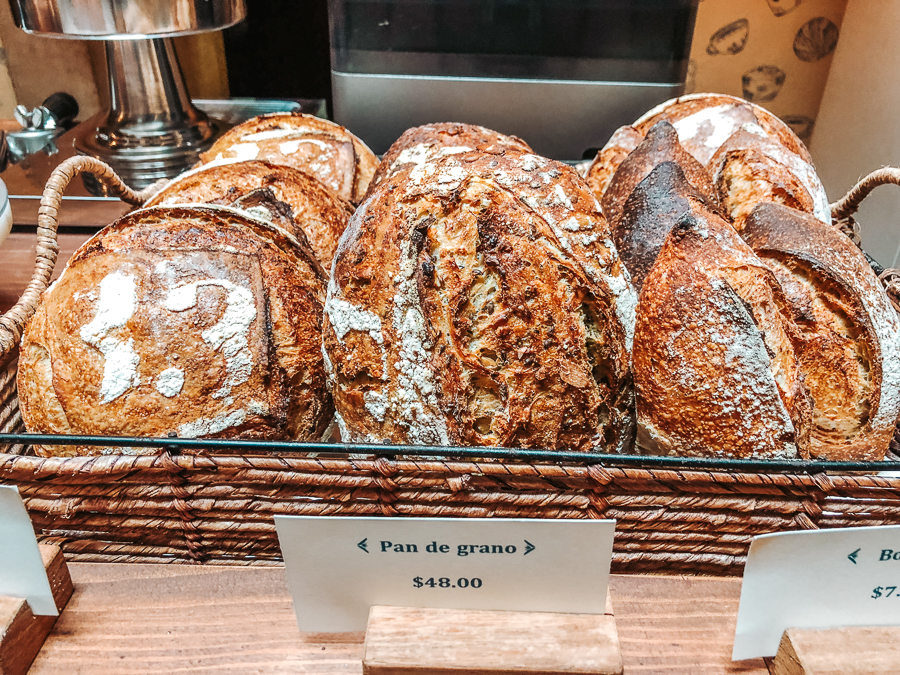
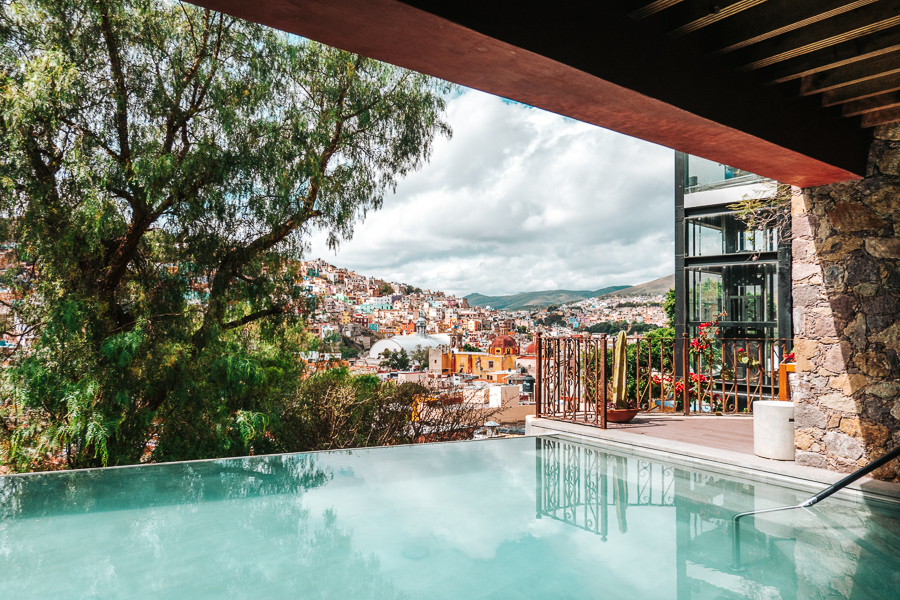
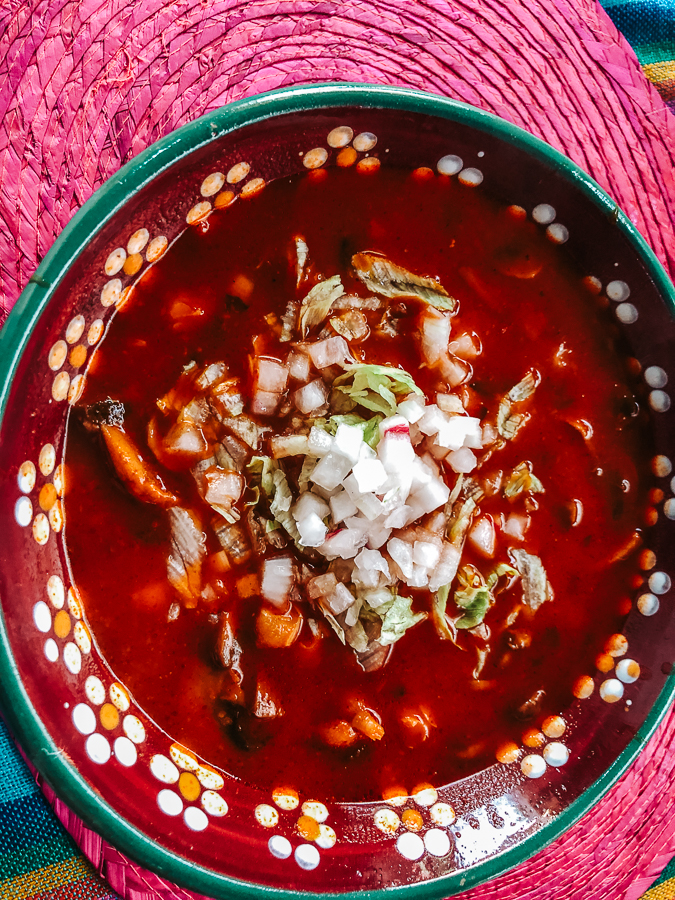
Culinary Delights: Street Food
After an epic night out at a concert, we were starving and ready to find some delicious local street food. Most nights we ended up at Plaza de San Roque where we found an elotes (grilled corn on the cob, dressed with mayonnaise, lime, cotija cheese and chili powder) and esquites stand run by a family of several women, different generations, with a line around the block most nights.
They had several gigantic metal pots bubbling with perfectly hot esquites, a popular Mexican street food that has grilled or boiled corn kernels and is mixed with a myriad of flavorings including mayonnaise, lime juice, chili powder, cotija cheese and more, depending on what you choose. Each pot contained a different type of delectable esquite and we were overjoyed to taste it once we finally made it to the end of the line each night. There is a reason you should try street food that has a long line – the wait is well worth the incredible delectable delight on the other end.


A Curious Visit to Hotel Castillo Santa Cecilia
We ended up going to Hotel Castillo Santa Cecilia randomly because we thought we had read there was a Cervintino festival event happening there, but once we took a 20 minute taxi ride there from Guanajato there was no such thing.
We had fun walking around the pretty if not gaudy hotel grounds though and getting a couple of fun pictures. The place really does look like a stone castle, complete with a full knight suit of armor greeting you on your way in the stone entrance.
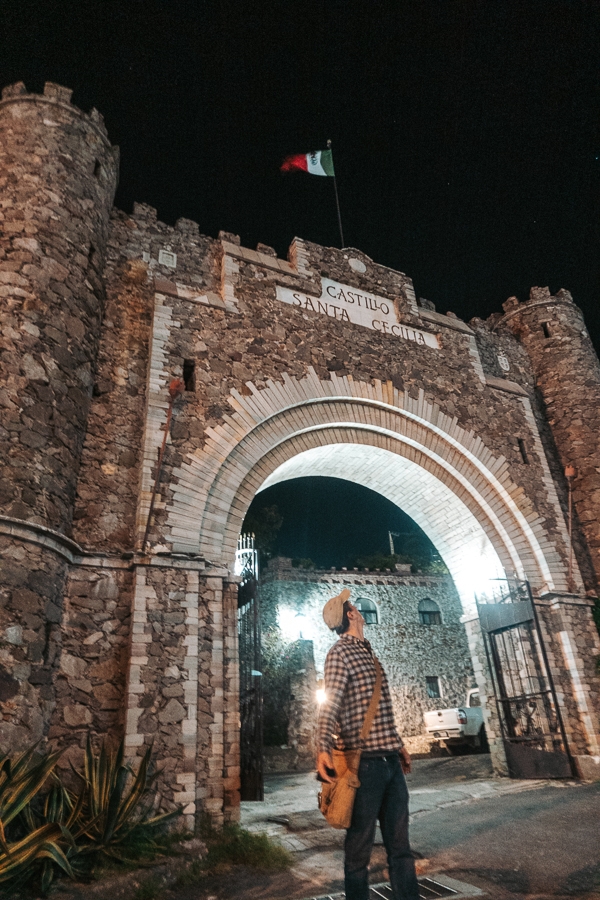
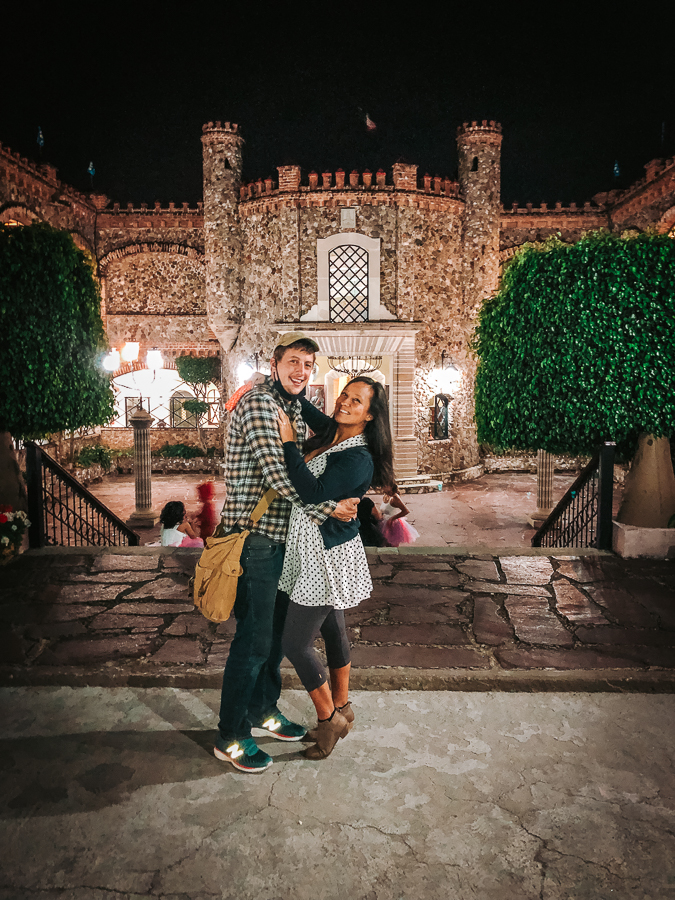
Final Reflections
Our week in Guanajuato during the Cervantino Festival was a harmonious blend of history, art, and cultural immersion. The city’s vibrant energy, coupled with the festival’s diverse offerings, created an experience that resonated deeply. Whether you’re a history enthusiast, art lover, or culinary adventurer, Guanajuato during the Cervantino Festival promises a journey of discovery and inspiration.

Answering Your Questions
1. When is the Cervantino Festival held in Guanajuato each year?
The Festival Internacional Cervantino typically takes place in mid-October, spanning over two to three weeks. Check the official schedule each year for exact dates and updated event details.
2. What are the must-see performances or events at the Cervantino Festival?
While the lineup changes annually, must-see performances usually include the opening ceremony, folkloric dance performances, orchestral concerts at Teatro Juárez, callejoneadas (musical alley tours), and international theater showcases.
3. Is Guanajuato safe and family-friendly during the Cervantino Festival?
Yes! Guanajuato is considered one of Mexico’s more walkable and culturally rich cities. During the festival, the city is well-patrolled and welcoming to travelers, families, and artists from all over the world.








